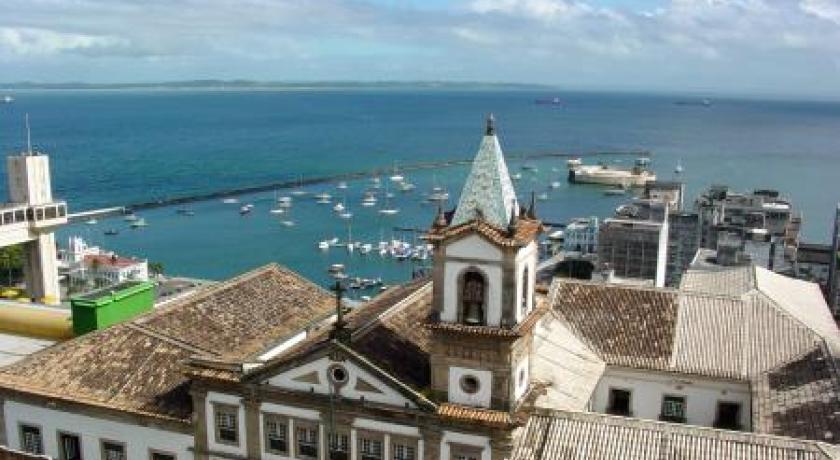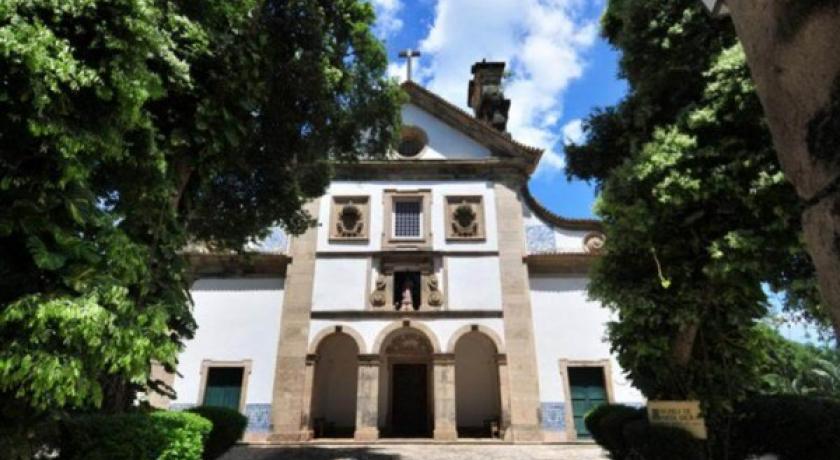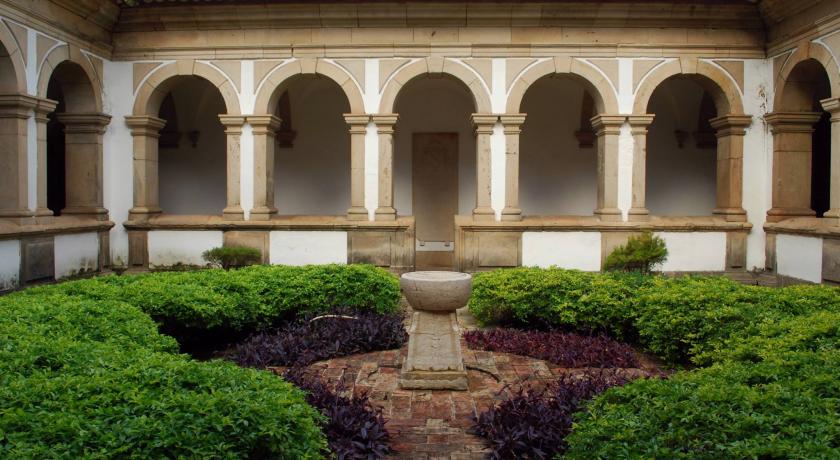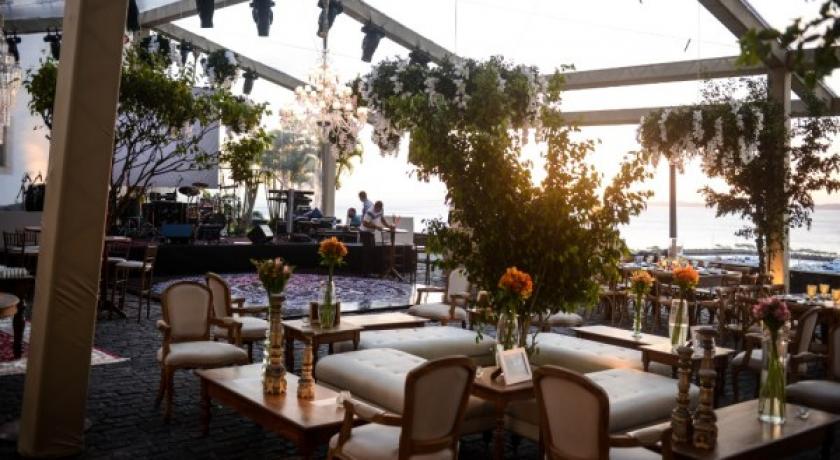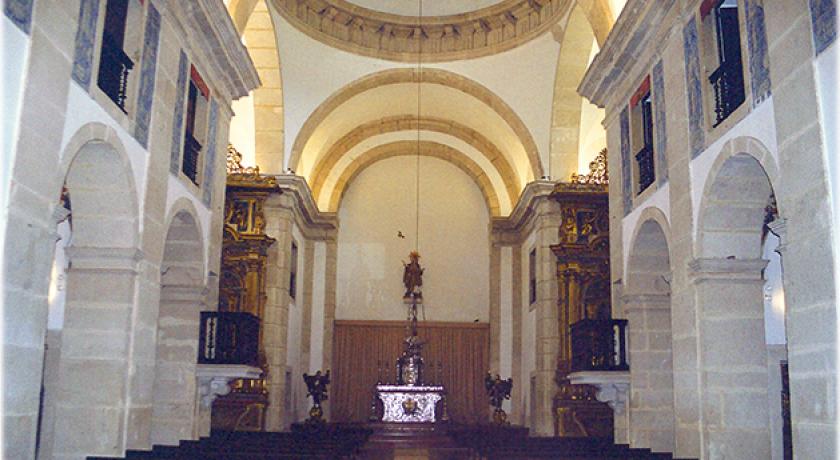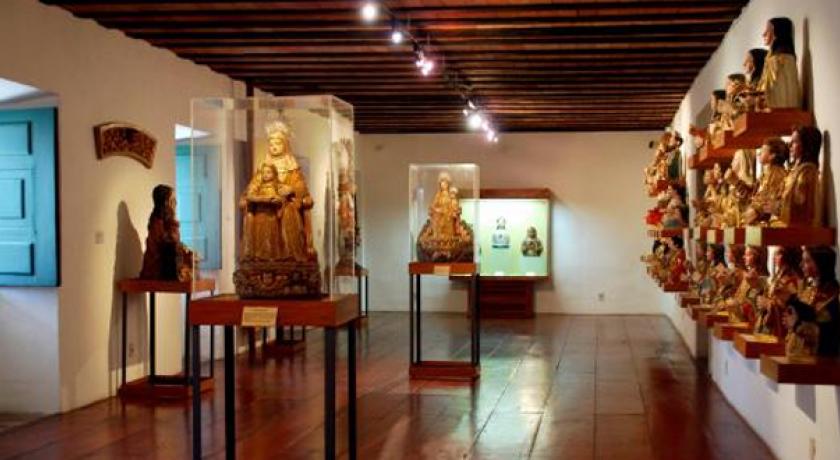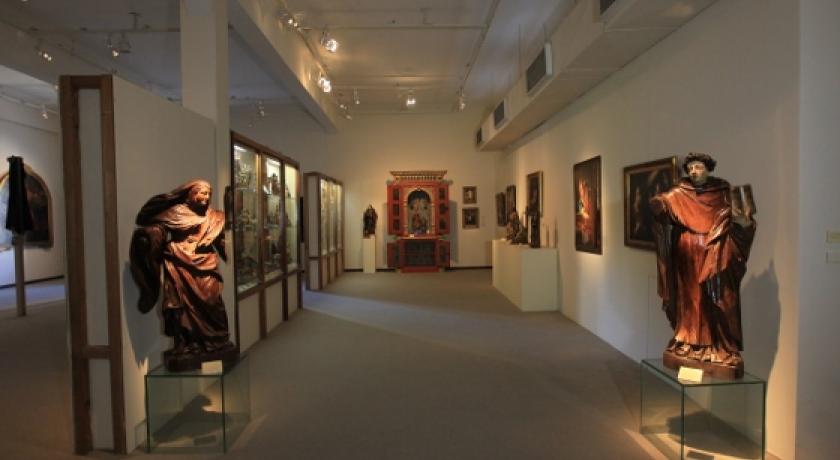Description
The Museum of Sacred Art of the Federal University of Bahia is a Brazilian museum of sacred art located inSalvador (Bahia) .
It was restored in 1958 , almost in ruins , by the Federal University of Bahia (UFBA), through an agreement with the Archdiocese of São Salvador da Bahia . An initiative of the then Rector Edgard do Rego Santos, probably creating the largest center of studies of sacred art in Latin America and the third largest in the world.
It was inaugurated on August 10, 1959 , on the occasion of the Fourth International Colloquium of Luso-Brazilian Studies, it became part of the UFBA structure as a supplementary body.
History
In the seventeenth century , six religious of the Order of the Discalced Carmelites arrived in Bahia ( Salvador ) to Angola to, by order of the King of Portugal, found a convent. Due to lack of vessels - a frequent occurrence at the time, they were forced to remain in Salvador for eight months. With difficulty finding suitable facilities, they had the idea of founding in the promising capital of the Portuguese colony the Convent of Santa Teresa.
To this end, they obtained authorization (Royal Charter) on June 25, 1665, and in the same year they contributed to Bahia on the vessel of Domingos Quaresma. The friars were Friar José do Espírito Santo, prior, and his conventual Friar Manoel de Santo Alberto, Friar Jerónimo de Santo Alberto, Friar João das Chagas, and lay brothers Friar Francisco da Trindade and Friar Antônio da Apresentação.
Convent of Santa Teresa
Little is known about the construction of the seventeenth century building, which was compared to the Convent of the Remedies of Évora of the same Order. One hypothesis raised by Dom Clemente da Silva Nigra - the director of the Museum during the period of his restoration (1958-1959), was that Frei Macário de São João was probably his builder - whose influence is present in the arch that he supports the choir of the church.
Around 1686 the convent was completed with a solemn religious act in the new (still unfinished) church, which was attended by political and ecclesiastical authorities, and the Marquis of Minas , then governor-general of the colony. Concluded in 1697, the church of Santa Teresa was inaugurated, at which time the image of Our Lady of Monte do Carmo was transferred there. another image donated to the convent, coming from Lisbon, was that of Nossa Senhora da Piedade , in the management of Friar Manuel da Madre de Deus, in 1706.
In the administration period of the prior, Friar Diogo de Santo Tomas de Aquino (1737-1739) installed the tiles that adorn the church and built the stone washbasin in the sacristy.
The late eighteenth century was marked by popular emancipationist manifestations that influenced the direction of the history of the Convent of Santa Teresa. From its occupation by the Portuguese soldiers of General Madeira, and then by the Liberation Army's 708 men, when the "City Hall" expressed its dissatisfaction with the "Teresians" until the "Federalist Revolution" of 1833, which sought to abolish " Regular Order of St. Teresa, "which only occurred, by virtue of Law No. 129, on June 2, 1840.
Seminar
With the Convent practically uninhabited for years, and the Archbishop Seminary with precarious facilities, the president of the province, Bishop Francisco de Sousa Paraíso , and Archbishop Romualdo Antonio de Seixas authorized the transfer of the Seminary there. In 1856 Dom Romualdo passed the administration to the lazarist priests, who in turn transmitted it to the secular priests, who occupied the convent for more than 20 years, once again returning the direction of the convent to the lazaristas in 1888 . The administrations of the lazaristas discharacterized the monument with the many reforms and extensions. In 1953 , the Seminary was transferred to another area (São Gonçalo) leaving the Convent in very poor state of conservation.
It was then that, in 1958 , the Federal University of Bahia and the Archdiocese of Salvador restored the convent-museum. The building was restored by the Works Department of the University of Bahia under the supervision of the National Historical and Artistic Heritage Institute . The restoration of the artistic works was carried out by a team led by Professor João José Rescala.
Museum
The Museum of Sacred Art of the Federal University of Bahia, restored, opened its doors with an exhibition composed of pieces of the collection and institutions and various collectors.
Its architectural complex enjoys a privileged view of the sea: the Bay of All Saints , from Itaparica Island to Maré Island . The interior of the temple, of single nave, is covered by vaults reinforced with arches of stone of stonework; the choir is situated on vaults of edges and an almost flat arch - typical in the Portuguese-Brazilian seiscentista architecture; the confessionals were built in the building itself to allow confessions to be made without the priests leaving their enclosure. In addition to the church, sacristy, choir, inner chapel, dining room, chapter room and library, the complex has 16 halls, 12 rooms, 10 cells, long corridors and galleries and two stone stairways with 17th century wall panels . The total area of the set is 5 261 square meters, with one hundred doors and 146 windows.
Some of the pieces that make up the collection of the Museum of Sacred Art are owned by the Archdiocese of San Salvador, the Monastery of Saint Benedict , the Brotherhood of the SS. Sacramento do Pilar , the Convento dos Perdões and several churches, as well as the Abelardo Rodrigues collection.
The Museum maintains a permanent exhibition of its collection, which covers the sixteenth, seventeenth, eighteenth and part of the nineteenth centuries.
Some pieces of the Museum, transcribed from the book "50 Pieces of the Museum of Sacred Art of Bahia" , by Professor Valentin Calderón de La Vara , Edition by agreement between the Federal University of Bahia and Dow Química SA, in 1981:
Sculptures
- Our Lady of Wonders
- Our Lady of Montessérrate
- Our Lady of the Conception (Penedo)
- Our Lady of Guadalupe
- Sant'Ana Mestra
- Our Lady of the Conception (ivory)
- Santa Teresa
- The Good Shepherd (ivory)
- Our Lady of Mount Carmel
- Santa Isabel, Rainhda of Hungary
- Crucifix
- Our Lady and Saint John
- Crucifix (Christ of Ivory)
- Adoration of the Shepherds
- Our Lady of the Conception with the Royal Crown of Dom João IV
- Our Lady of Conception
- Our Lady with the Child Jesus
- São Joaquim, Sant 'Ana and Our Lady
- Saint John the Baptist
- Our Lady of Rosario
- Our Lady of Mount Carmel
- Our Lady of the Conception (ivory)
- Our Lady
- Angel-Tocheiro
- Lord of the Cold Stone
- Our Lord of the Column
- Walk with baby Jesus
- Sant 'Ana and Our Lady
- Lord God, on the Mount
- County Dublin hotels
- Saint Augustine
- Chalice-Custody
- Naveta
- Cross Processional
- Amber
- Altar Stool
- Cruet
- Custody
- Basin and Gomil
- Tocheiro
- Lampadário
- Altar and Tabernacle
- Sacras
Paintings
- Our Lady of the Assumption
- Our Lord after the Flagellation
- Saint John of God in Glory
- They are under guard of the MAS screens authored by José Joaquim da Rocha, José Teófilo de Jesus and others.
Furniture
- Arcaz de SAcristia
- Altar-Wardrobe
- Classroom Chair
Source: https://pt.wikipedia.org/wiki/Museu_de_Arte_Sacra_(Universidade_Federal_da_Bahia)
Address
Salvador
Brazil
Lat: -12.978982925 - Lng: -38.516017914


